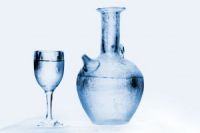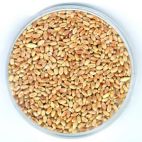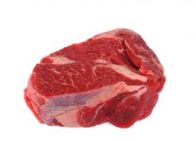
|
Nutritional
Elements of Whole Health
|

Body weight plays a huge role in overall
health. To maintain heart, joint, digestive, and even mental health a
balanced program that includes healthy food and regular exercise. To
maintain optimal weight and health, nutrition is a key element. Individual
nutritional needs vary depending upon health and fitness goals. To lose
body fat and body weight, one has to become familiar with the variables
that affect weight loss and body fat loss. One key to good overall health
is to monitor body fat rather than concentrate on loosing body weight.
Losing body fat reduces the risk for coronary artery disease, while losing
overall body weight doesn 't neccessarily address this risk. In other
words, cut or reduce the intake of fatty foods and increase your physical
activity level.
It is also important to include the following
six essential nutrients daily to optimize your overall health while
controling weight and body fat.
Water
Vitamins
Minerals
Carbohydrates
Fats
Proteins
|

Water is the most essential nutrient the body
needs. Forty to sixty percent of your body weight is water. Muscle
composition is approximately 70% water. When you exercise, your body loses
water through perspiration (dehydration). It is important that you
continuously drink water while you are exercising and throughout the day.
Eight to ten glasses (8 fluid ounces) of water are recommended throughout
the day for the average person. Your individual level of water intake
relates specifically to your body weight, height and activity levels.
Consult a registered dietitian for specific details about your own
personal consumption.
|

Vitamins and minerals are essential to a
healthy diet and are found in the natural foods of fruits, vegetables,
meats and whole grains. Most nutritionists will recommend that getting
these elements from food are the better choice but when these foods can
not be incorporated into daily meals supplements can be an
alternative.
Vitamins are organic
compounds (natural and contain carbon) which provide energy to the body
and are needed in small amounts to assist with chemical reaction within
the cells. Vitamins come in two forms; fat soluble and water
soluble.
- Fat Soluble Vitamins (A,
D, E, K) are stored in the adipose tissue (fat tissue) and can build up
high levels of toxins in the body if they are not
utilized.
- Water Soluble Vitamins
(B, C) are excreted if your daily amount of intake is too great and can be
toxic in the body if they are not utilized.
Minerals are inorganic
substances (unnatural and man made) and they regulate processes within the
body. Minerals are incorporated into different structures within the body
to create enzymes, hormones, skeletal bones, skeletal tissues, teeth and
fluids. Calcium and phosphorus are the two most common minerals found in
the body. Some of the other prevalent minerals found in the body are;
iron, zinc, sodium, potassium, magnesium, fluoride, sulfur, copper, and
chloride.
If mineral levels are
overabundant in the body, such as sodium, they may facilitate negative
effects in the body. High sodium levels may elevate blood pressure. If
mineral levels are inadequate in the body, such as iron, they may
facilitate negative effects in the body. Low iron levels in women can
produce anemia (a deficiency in blood iron levels). Anemia can restrict
oxygen and carbon dioxide removal from the cells. Low calcium levels can
facilitate irregular muscle contractions, bone density loss, blood
clotting and improper brain functioning.
For further in-depth information about
vitamins and minerals, consult a registered dietitian or your
physician.
|
|
Calories
When most people link about maintaining or
loosing weight calories are the first on the list of things to monitor. To
understand what calories are and how to balance nutrition and weight
maintenance here are some elements of the calorie:
A calorie, or kilocalorie (Kcal), is a
measure of heat energy. Food calories are nutrients and supply energy to
the body. It is essential that you take in the recommended amount of
calories per day. The caloric intake level that 's appropriate for you
depends on a number of factors, including your height, weight, and gender.
If you want to determine a specific figure that is, approximately how many
calories you should consume in a day again, consult a registered
dietitian.
There are three types of
calories:
The
American Heart Association recommends a daily total food diet that
consists of the following caloric breakdown:
- -50%
carbohydrate
- -30%
fat
- -20% protein
For
individuals who are exercising on a consistent basis, it is recommend that
a daily total food diet consist of the following caloric
breakdown:
- -65% carbohydrate
- -10%
fat
- -25% protein (1.5 gram per pound of body
weight)
This caloric breakdown is based upon a higher
carbohydrate storage (glycogen storage) that enhances muscular strength,
muscular endurance, and athletic performance. The higher level of
carbohydrate (65 percent) supplies a greater level of energy to the
muscular system. The lower fat level (10 percent) decreases your risk for
coronary artery disease. The protein level (25 percent) is increased to
offset the nitrogen expenditure from the body during intense exercise
activity and to increase the amount of amino acids supplied to the body
which help build muscle strength and muscle hypertrophy (increase in
muscle cell size).
Burning
Calories
We've all read about special pills or
formulas that help your body "burn" excess calories. If only it
were that simple.
But the reality is this: you need to burn off
3,500 calories more than you take in to lose 1 pound, according to the
American Dietetic Association (ADA). One way to do this is to reduce the
amount of calories you take in. But ADA says diet alone isn't as effective
as diet and exercise.
According to the National Institutes of
Health (NIH), most of the energy we burn every day goes towards basic
functions such as:
* sleeping
* breathing
* digesting food
* sitting
But beyond this, any physical activity in
addition to what we normally do burns up extra calories. Just how many
calories are we talking about? Just to give you an idea, here is the
amount of calories used during an hours worth of specific activities,
according to NIH. These figures are based on a 150-pound person. Heavier
people burn more calories, lighter people burn less. For example, a
100-pound person burns 1/3 fewer calories, so you would multiply the
number of calories by 0.7. For a 200-pound person, multiply by 1.3.
In upcoming issues we
will explore more of the exercise and diet choices available for Living
Healthy!
|

Carbohydrates are converted into sugars. Your
level of carbohydrate intake will depend upon your desired health and
fitness goals. Carbohydrates come in two forms:
1. Simple sugars
Simple sugars are used almost immediately
during exercise. Examples of simple sugars are processed sugar and fruit
sugar. Consuming simple sugars alone will not help during endurance
exercise.
2.
Complex sugars
Complex sugars, also
called complex carbohydrates, supply energy to the muscles during
exercise. Muscles store large amounts of glucose or glycogen that supply
energy to the muscles during prolonged exercise. Complex carbohydrates
fuel the body during prolonged exercise. Examples of complex sugars are
breads, cereals, grains, pasta, rice, fiber, potatoes, vegetables and
fruits.
|

A fat is another term for lipid. High fat
intake can lead to obesity, heart disease, heart attacks, and strokes. The
lower your level of fat intake, the lower your risk of developing coronary
artery disease.
However, fat has positive
attributes, too. The body must maintain a certain level of body fat to
insulate its inner systems, and to help process vitamins and minerals.
Like carbohydrates, fat also fuels the body during exercise. Your level of
fat intake should depend upon your health and fitness goals.
Examples of foods that are high in fat are
cheese, nuts, avocados, cooking oils, and ice cream. It 's a good idea to
restrict your consumption of these types of foods. There are three types
of fat:
1.
Saturated fat
Saturated fat intake is
the most detrimental to the body. Saturated fat has the highest number of
fatty acids. It can cause clogged arteries, decreased blood flow transfer,
heart attacks, strokes, and other coronary diseases.
2. Polyunsaturated
fat
Polyunsaturated fat has
fewer fatty acid molecules than saturated fat, and is therefore better for
you than saturated fat. You should have a higher intake of polyunsaturated
fat than saturated fat. Polyunsaturated fat is still detrimental to
coronary arteries and increases your risk for coronary artery
disease.
3.
Monounsaturated fat
Monounsaturated fat has even fewer fatty acid
molecules than polyunsaturated fat, and for this reason is the best of all
three fats. You should have a higher intake of monounsaturated fat than
the other two fats. Monounsaturated fat is still detrimental to coronary
arteries.
|

A protein is composed of amino acids, which
help to build muscle mass. The higher your level of muscle mass, the more
efficient your basal metabolic rate. An efficient basal metabolic rate, in
turn, increases fat and calorie expenditure at a resting state. Your level
of protein intake depends upon your desired health and fitness goals;
consult with a dietitian to determine your specific protein
requirements.
Some foods that are high
in protein include egg whites, chicken (white meat), lean beef (red meat),
beans, and skim milk.
|
|
|
|
